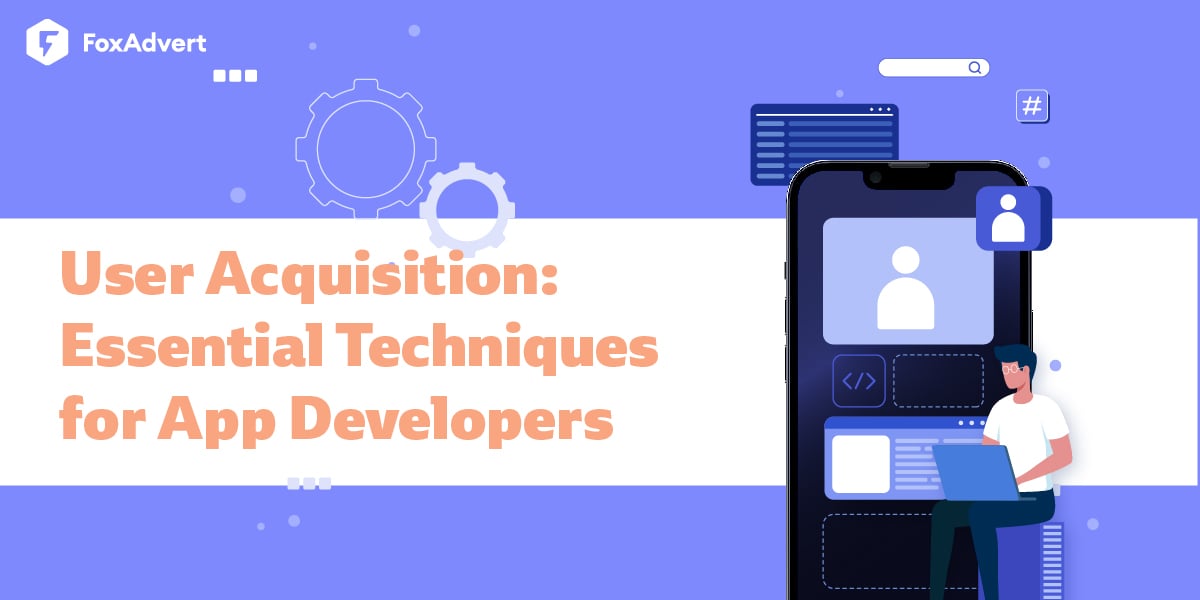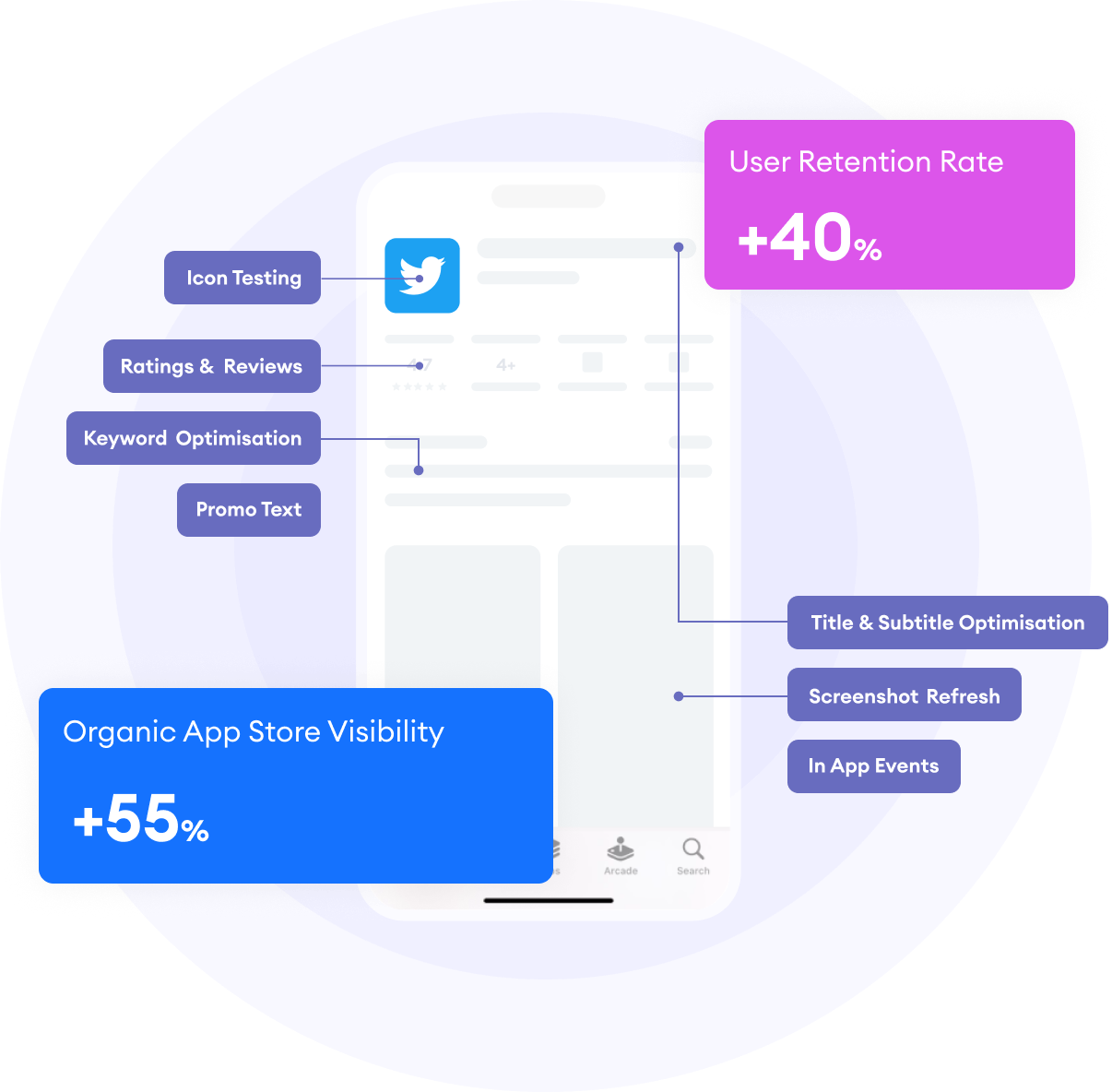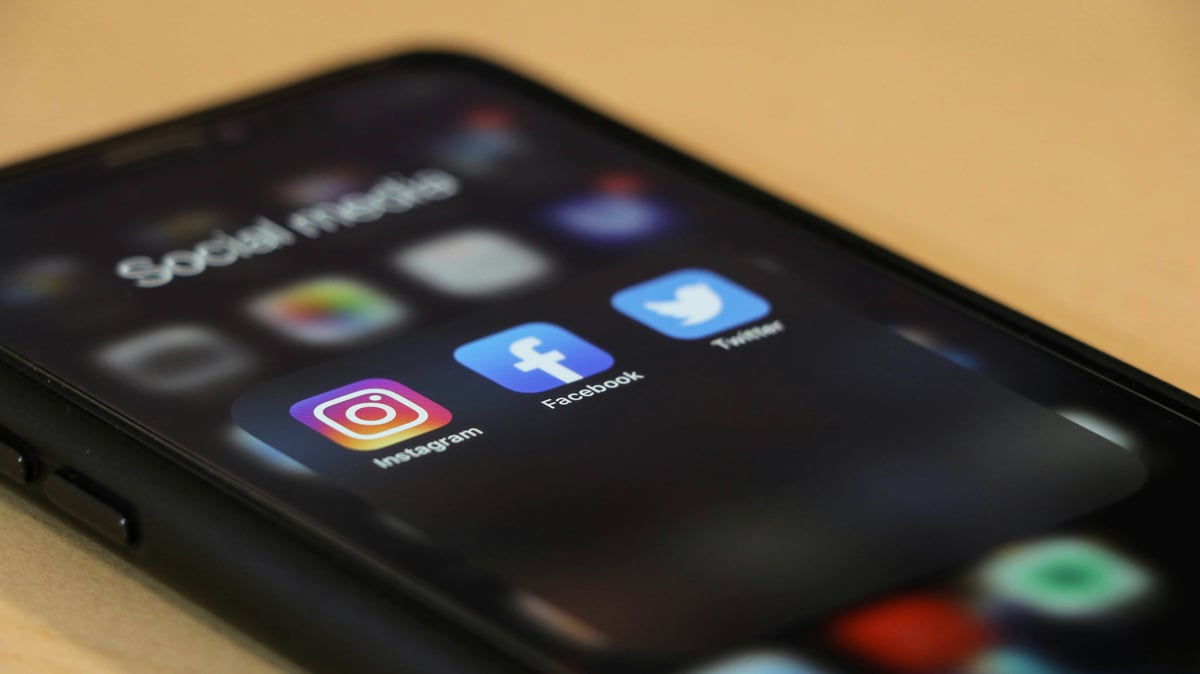
User acquisition is one of the most crucial aspects of app development and marketing. Did you know that there are over a million apps competing with yours on the App Store every day? In such a saturated market, how can you accurately acquire your users and ensure your app's survival? Therefore, effective user acquisition techniques can be the difference between your app's success and its downfall. In this blog, we will unveil essential strategies that every app developer should master, empowering your app to thrive in a fiercely competitive market.
User Acquisition refers to the process of bringing new users to a mobile application. This involves a combination of marketing strategies aimed at increasing visibility and encouraging downloads among potential users. In short, user acquisition is about not just getting users to download your app, but also about keeping them engaged and returning for more.
By continuously acquiring new users, an app can increase its market share and become a recognized player in its niche. Higher user numbers enhance visibility among potential downloaders which can lead to organic growth. When potential users see an application with thousands, or even millions, of downloads, they are more inclined to give it a chance, trusting that it meets a certain quality standard as evidenced by the experiences of others.
Monetization strategies, such as in-app purchases, subscriptions, or advertising, often rely on having a substantial number of engaged users. For instance, apps with more downloads have greater opportunities to convert users into paying customers. The more people using the app, the higher the chances for upselling premium features or generating advertising revenue.
When users have a good experience in a highly rated, highly engaged app, they are more likely to form a positive brand perception. This will have a good word-of-mouth effect in further marketing and reduce future user acquisition costs. Users are more likely to trust an app that has been widely adopted and rated positively by many others. As trust grows, so does loyalty, leading to a stronger connection with your users.
For startups and app developers seeking funding, demonstrating strong user acquisition metrics can significantly enhance investment appeal. Investors are more likely to perceive an app with rapid user growth and engagement as a promising opportunity worth investing in. Robust user acquisition results underscore the market potential of the application, suggesting that with additional funding, substantial returns on investment could be realized.
Effective user acquisition goes hand in hand with gathering valuable insights into user preferences and behaviors. As your users interact with the app, their feedback can highlight areas of improvement and optimization. Analyzing user data allows developers to make informed decisions about product updates, feature enhancements, and overall user experience.
When it comes to measuring the effectiveness of user acquisition efforts, several key metrics should be closely monitored:
Cost per Acquisition (CPA) is a critical metric representing the total cost incurred to acquire a new user. The standard formula is:
CPA = Total campaign cost ÷ Number of customer acquisitions.
Understanding your CPA helps in budgeting marketing efforts and optimizing campaigns to achieve a lower cost per user.
🔹 FoxAdvert Insights:
To reduce your CPA, consider experimenting with A/B testing on your ad creatives and targeting strategies. For instance, if a particular demographic offers a lower CPA, focus your campaigns on that user segment. Additionally, monitor seasonal trends; you may find that some times of the year yield lower acquisition costs than others.
The conversion rate means the percentage of users who complete desired actions (such as downloading the app after clicking on an advertisement) at each stage of your funnel.
Conversion rate = (number of conversions ÷ total number of users) × 100%.
A high conversion rate indicates effective user acquisition strategies, while a low one may indicate the need for adjustments in your targeting or messaging.
🔹 FoxAdvert Insights:
To improve this metric, make sure your app features aligh with customer demand. For example, using clear call-to-action phrases and showcasing unique app features can entice more users to complete the download.
Retention rate measures the percentage of users who continue to use the app over time.
Retention rate (day N) = (number of active users on day N ÷ number of installed users) × 100%.
Keeping users engaged is as important as acquiring them in the first place. A high retention rate usually correlates with high user satisfaction and an effective user acquisition strategy.
🔹 FoxAdvert Insights:
To enhance retention rate, implement in-app onboarding tutorials to guide new users swiftly towards key features. Consider sending personalized push notifications to re-engage lapsed users, offering them incentives to return, such as exclusive content or discounts.
Return on Investment (ROI) is a performance measure used to evaluate the efficiency of an investment.
ROI = ((Revenue – Cost) ÷ Cost) × 100%.
For user acquisition, it reflects the revenue generated per dollar spent on acquiring users. Understanding your ROI can help prioritize effective user acquisition channels.
🔹 FoxAdvert Insights:
If you notice a channel providing low ROI, don’t hesitate to pivot your strategy. Optimizing ad spend towards high-performing channels can significantly enhance overall profitability. Additionally, ensure you factor in customer support costs or any other hidden expenses related to user acquisition when calculating your ROI.
User Lifetime Value (LTV) estimates the total revenue a user will generate throughout their relationship with your app.
LTV = ARPU (average revenue per user) × average user lifecycle.
By focusing on acquiring high LTV users, you can ensure that your overall user acquisition efforts yield positive returns.
🔹 FoxAdvert Insights:
To identify high LTV users, analyze their behavior patterns, such as average session length and frequency of in-app purchases. Implementing loyalty programs could also incentivize users to increase their spending, further enhancing their lifetime value.
App Store Optimization (ASO) is a critical technique for enhancing the visibility and attractiveness of your app in app stores. It plays a significant role in user acquisition as it can significantly improve organic downloads and drive engagement without substantial advertising costs. Here's a deeper dive into each element of ASO and actionable steps for implementation:
Title and Subtitle: Optimize the title and subtitle to be keyword-rich yet relevant to the app's functionality. Meanwhile, please follow the App Store character limits. Titles and subtitles should generally be 30 characters or fewer.
Description: Your app description is where you have the opportunity to elaborate on the app's unique value proposition. Start with a strong opening that hooks the reader. It should summarize what the app does and why it stands out in a few sentences. Secondly, list the key features and benefits. Use bullet points for clarity and easy readability. Explain how the app solves user problems or improves their lives. Finally, conclude with a motivating call to action.
Keywords: Utilize effective keywords in the app listing to improve visibility in app store searches. Use tools like FoxData to discover trending keywords relevant to your app's niche. Look at competitors' apps to identify which keywords they rank for. What's more, you can focus on long-tail keywords that are less competitive but have high relevance. These can often lead to higher conversion rates as they capture specific user intents.
Icon and Screenshots: Attractive icons and screenshots play a significant role in convincing users to download the app. Your app icon is often the first impression users get. Ensure it's visually appealing and representative of the app's core function. Use contrasting colors and simple shapes that stand out. In addition, include high-quality screenshots that highlight the app's user interface and key features.
Video Preview: If applicable, a video preview can dramatically enhance your app's presentation. An engaging 30-second clip highlighting the app’s features and benefits can significantly improve conversion rates.
Reviews and Ratings: Reviews and ratings play a crucial role in building trust and encouraging downloads. Encourage satisfied users to leave positive reviews and ratings, which significantly impact conversion rates. In addition, engage with users by responding to both positive and negative reviews. Addressing concerns or thanking users for positive feedback can help foster community and encourage more users to download your app. Do not forget to regularly monitor your ratings and strive to improve your app based on user feedback. Elevating user satisfaction can lead to better ratings, which in turn increases visibility and credibility.

Content marketing is a crucial strategy for organically attracting users to your app. By providing valuable and relevant content, you can establish your app as a trusted resource and guide potential users through their decision-making process. While many might first think of social media when considering content marketing for apps, it's essential to recognize that other avenues such as blogs, Emails, and websites can also play significant roles in the user acquisition (UA) strategy. Here are several effective content marketing strategies you can implement:
Creating informative blog posts is an excellent way to provide solutions to potential users' problems while driving traffic through search engine optimization (SEO).
Identify User Pain Points: Understand the common challenges that your target audience faces and create content that addresses these issues. For instance, if your app focuses on productivity, write posts about time management techniques or productivity tips.
SEO Optimization: Integrate relevant keywords naturally into your blog content to enhance visibility in search engine results. Optimize titles, meta descriptions, and headers to make posts more discoverable.
Engaging Content: Aim for engaging and well-structured articles that inform, entertain, and inspire readers. Use visuals, infographics, and data to support your points. Including actionable advice and steps empowers readers to take immediate action and positions your app as a solution.
Promotion and Sharing: Once your blog posts are live, promote them across various channels, including social media and forums where your target audience is active. Encourage readers to share posts with their networks to increase reach and visibility.
Video content is an incredibly effective means of communication, offering a dynamic way to showcase the features and benefits of your app.
Feature Demos: Create short demo videos that highlight the app's functionalities. Show how to navigate the app and perform key activities. This visual representation can resonate with users who prefer a demonstration over lengthy descriptions.
User Testimonials: Include testimonials from satisfied users within your videos to build credibility. Highlight real-life success stories and how the app has positively impacted users' lives. This social proof is invaluable for attracting new users.
Format Variety: Experiment with different video formats, such as explainer videos, tips and tricks, or user-generated content. Hosting live Q&A sessions on platforms like Instagram or Facebook can create excitement and direct engagement with potential users.
Video SEO: Don't forget to optimize your video content as well. Use relevant keywords in titles, descriptions, and tags, and create enticing thumbnails to attract viewers. Share these videos on your official website, YouTube channel, and social media profiles.
Maintain an active social media presence to engage users, share content, and create a community around your app.
Platform Selection: Identify which social media platforms align best with your target audience. For example, visually appealing apps may thrive on Instagram, while professional or productivity apps may find more success on LinkedIn.
Hashtags and Trends: Utilize trending hashtags related to your app's niche to increase visibility. Participate in relevant conversations to position yourself as an industry thought leader.
Consistent Posting: Develop a content calendar to ensure a consistent posting schedule. Share a blend of promotional content, educational resources, user-generated content, and engaging questions to keep followers involved. Consistency builds brand recognition and trust.
Engagement: Encourage interaction by asking questions, running contests, and responding to comments. Host live events to directly connect with users, answer questions, and build a community centered around your app.
Offering webinars or tutorials is a valuable way to educate your audience while building trust.
Educational Topics: Choose topics that align with your app's purpose and user interests. For instance, if your app is designed to help users improve their video editing skills, you could host an educational webinar on video editing strategies.
Follow-Up Content: After the webinar, provide attendees with additional resources—such as follow-up emails, recorded sessions, or downloadable guides—to enhance the learning experience and keep your app top-of-mind.
Encourage Downloads: Conclude webinars with a compelling call to action, encouraging participants to download the app to implement what they learned. Provide a special promotion or discount for live attendees to incentivize immediate action.
Implementing targeted email marketing campaigns is essential for nurturing leads and keeping your audience informed about app updates or new features.
Segment Your List: Categorize your email list based on user behavior, interests, and engagement levels. This allows you to tailor your messaging to different segments, improving relevance and engagement.
Value-Driven Content: Send regular newsletters that offer valuable insights, tips, and special promotions. Share informative content, such as blog posts, feature updates, or user success stories, to maintain interest.
Feedback and Engagement: Use email to solicit feedback from users on their experience with the app. Encourage users to participate in surveys or polls to improve user satisfaction and incorporate suggestions into future updates.
Paid advertising is a highly effective strategy for accelerating user acquisition and gaining immediate visibility in an increasingly competitive app marketplace. By investing in paid advertising, app developers can efficiently reach their target audience, driving downloads and engagement considerably faster than relying solely on organic methods. Google Ads and Apple Search Ads platforms allow app developers to target ads to users actively searching for specific types of applications. This method helps reach a high-intent audience, maximizing conversion rates.
Creating a user referral program incentivizes existing users to invite new users to the app, often increasing user acquisition at a lower cost compared to traditional advertising methods. Offering rewards for both the referrer and the new user can create a win-win situation.
Finding the right user acquisition agency can be instrumental in your app's success. Here are some key factors to consider:
Experience: Agencies that have a proven track record in app user acquisition will likely be more effective.
Reputation: Check reviews and case studies to gauge client satisfaction and results.
Transparency: Choose an agency that offers transparent pricing and clear reporting on campaign performance.
FoxAdvert has established itself as a reliable agency in the app user acquisition space. Our expertise in data-driven marketing strategies can help optimize your user acquisition efforts, resulting in higher conversion rates and lower costs over time.
While effective user acquisition strategies are critical for success, app developers often face common challenges:
Ignoring Analytics: Not tracking user acquisition metrics can lead to unoptimized strategies. Regularly analyze performance data to make informed decisions.
Neglecting Engaged Users: Focusing solely on new users can alienate existing ones. Invest in retention strategies to keep users engaged.
Overreliance on Paid Advertising: While paid ads can provide immediate results, overreliance on them without building organic growth can be unsustainable. By combining ASO and SEO strategies, you can get more potential users through organic traffic.
Overlooking Market Changes: User and market demands are constantly changing, and if you ignore these changes, you are likely to be eliminated by your competitors. It's essential for app developers to stay updated on industry trends and shifts in user behavior.
User acquisition is a multifaceted process that plays a vital role in the success of any app. By understanding key metrics, implementing effective strategies such as ASO, content marketing, and paid advertising, and staying adaptable, app developers can navigate the complexities of user acquisition effectively. Investing time and resources into these strategies can lead to increased visibility, user engagement, and long-term success in the competitive market.
Let FoxAdvert guide your user acquisition strategy. Here's a case study: Learn how we helped this dating app grow organic traffic 10x in two months, successfully acquiring users and increasing brand awareness through its website!
Contact us today for a free consultation and discover how we can help app developers like you grow your business through smarter, more searchable marketing solutions tailored for maximum impact.